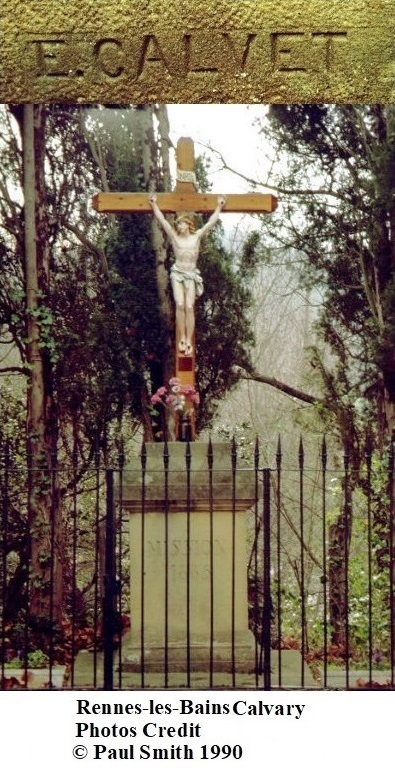Ten Reasons Why Rennes-le-Château Is A Myth
17.06.2024
1. That Abbé Bérenger Saunière discovered a treasure in the village of Rennes-le-Château. Noël Corbu bought Saunière's Domain in 1946, but the treasure story only began circulating after the death of Marie Dénarnaud in 1953 (Abbé Saunière's housekeeper); that's 7 years without a SINGLE whisper about the alleged treasure. There is plenty of evidence that Abbé Saunière made a considerable sum from trafficking in masses 1898-1915.
2. That there is a “difference” between “His Druidic Majesty” (Alpha Galates) and the “Direct Lineal Descendant of Dagobert II” (Priory of Sion) – both of these appellations were claimed by Pierre Plantard during the 1940s and 1960s, who adhered to mystical Right-Wing Pétainism during World War Two and who later claimed to have French Royalist Blood in his veins. These two appellations – rather than contradicting each other – corroborate each other when it comes to Pierre Plantard’s psychology and beliefs.
3. That Bernard de Blanchefort of Rennes-le-Château and Bertrand de Blanchefort, Grand Master of the Knights Templars, were one and the same person (this began with Gérard de Sède and was repeated by Henry Lincoln until his death). Bertrand de Blanchefort, sixth Grand Master of the Knights Templar 1156-1169, originated from the Guyenne region of France.
4. That there is a difference between the Rennes-le-Chateau treasure and Flying Saucers. The treasure of Rennes-le-Château is no more a valid subject matter than Flying Saucers. Both are considered pseudo-historical and pseudo-scientific subject matters.
5. The Jules Verne Connection. This has more to do with Priory of Sion mythology than with Rennes-le-Château. The coincidences are accidental.
6. The Maurice Leblanc Connection. Again, this has more to do with Priory of Sion mythology than with Rennes-le-Château; it was Philippe de Chérisey who first started the connection of Maurice Leblanc with Priory of Sion/Rennes-le-Château. Philippe de Chérisey believed that Maurice Leblanc’s novel featuring the character Arsène Lupin, “La Comtesse de Cagliostro: Dans robore fortuna, Des rois de Bohême, Le trésor des rois de France, Le chandelier à sept bras”, published in 1924, was a reference to the treasure of Rennes-le-Château.
7. That Bérenger Saunière visited Paris. This was discredited in 1996 when the BBC 2 documentary “The History of a Mystery” (InVision) received a letter from the church of Saint Sulpice, who stated that there wasn't any substance to the allegations.
8. The tomb that once existed at Les Pontils was connected with the French artist Nicolas Poussin and really existed in 1637–1638. This was first claimed by Jean Pellet and Gérard de Sède in their collaborated article “Le secret de Nicolas Poussin” (Le Grand-Albert, Journal des Sciences Secrets, N° 9, pp.46-48, 1972). The real tomb was destroyed by the owner of the land it stood on in 1988. Two French authors, Pierre Jarnac (Michel Vallet) and Franck Marie, interviewed the person who claimed to have witnessed its construction in 1933 (although he possibly got the date wrong), when he was a young boy (Adrien Bourrel, 1928-2016).
9. That the shepherd Ignace Paris was a historical person. When in fact the evidence suggests otherwise.
10. That Emma Calvé and Abbé Bérenger Saunière knew each other. It was during the early 1990s, when I momentarily became the spiritual reincarnation of Philippe de Chérisey with my camera, that I discovered the source of this myth – the name of E. CALVET inscribed at the base of the Calvary at Rennes-les-Bains.

|
